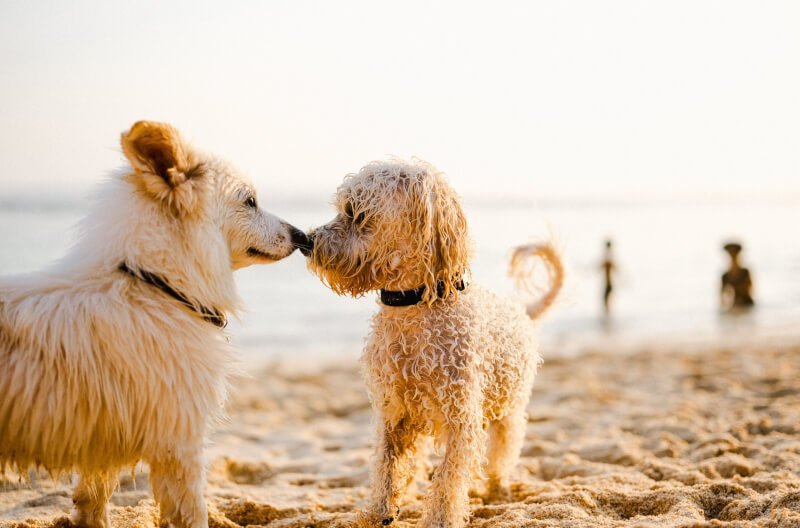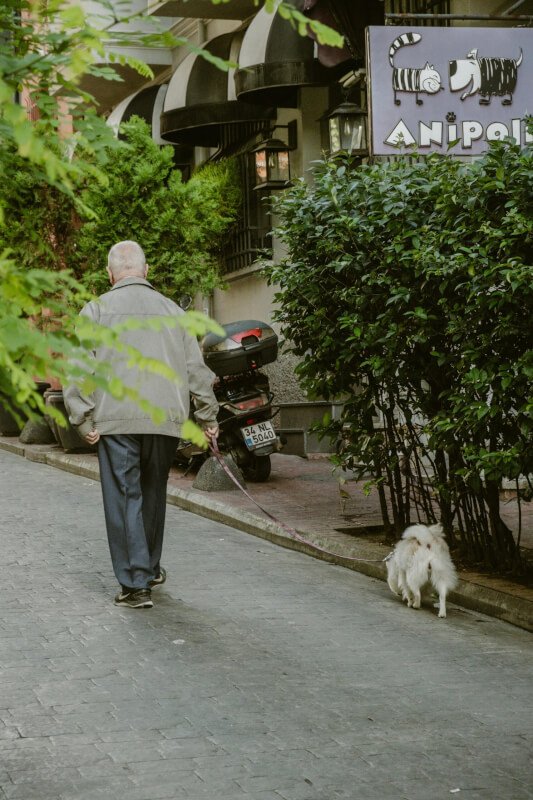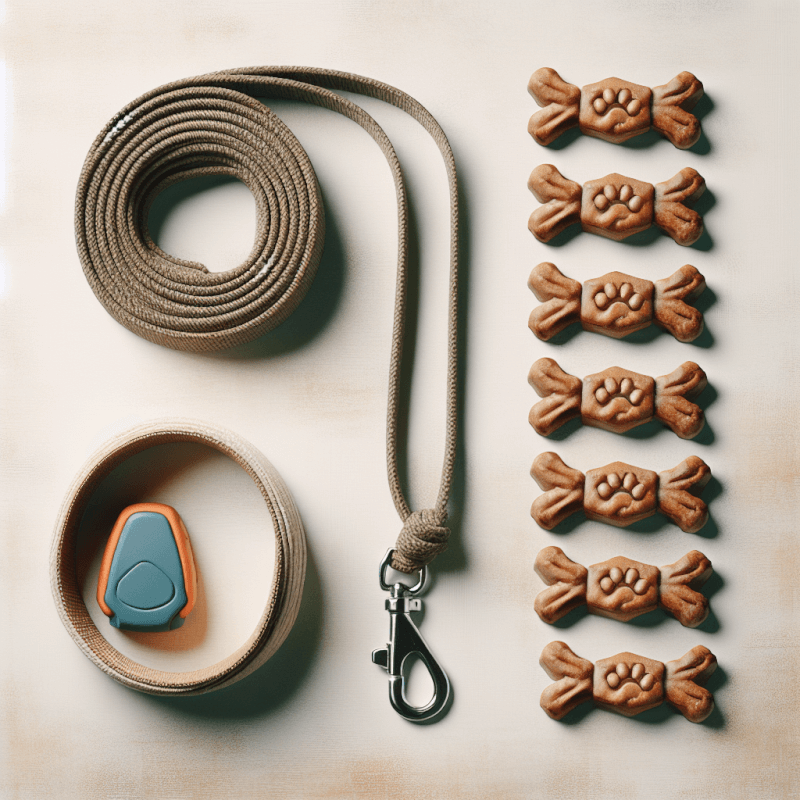If you’ve ever wondered how to behavior train a dog, look no further. In this article, you will discover effective techniques to help you train your furry friend and shape their behavior in a positive way. Whether you’re dealing with disobedience, aggression, or leash pulling, we’ve got you covered. Get ready to embark on an exciting journey of building a strong bond with your canine companion and achieving a well-behaved and happy dog.
Understanding the Basics of Behavior Training
Behavior training is an essential aspect of owning a dog. It not only helps in shaping your dog’s behavior but also strengthens the bond between you and your furry friend. By teaching your dog proper behavior, you can ensure their safety and the safety of those around them. Understanding the basics of behavior training is crucial to successfully training your dog and achieving the desired results.
Ready for Cat Trivia?
Test your knowledge about cats!

One of the reasons why behavior training is important is that it helps prevent unwanted behaviors. Dogs, especially puppies, are naturally curious and may engage in behaviors that are unacceptable or potentially harmful. Without proper training, they may develop habits such as jumping on people, chewing furniture, or even showing aggression. Training allows you to establish boundaries and teach your dog what is appropriate behavior, ensuring a happy and harmonious household.
There are different methods of behavior training, and it’s important to find the one that works best for you and your dog. Positive reinforcement training is widely considered one of the most effective methods. It involves rewarding your dog for exhibiting desired behaviors, such as sitting or staying. This method focuses on rewarding good behavior rather than punishing unwanted behavior, creating a positive learning environment for your dog.
Setting realistic goals is an important aspect of behavior training. While it’s natural to want a perfectly behaved dog, it’s essential to understand that training takes time and patience. Start with small achievable goals and gradually work your way up. By setting realistic expectations, you can ensure both you and your dog have a positive training experience.
Understanding your dog’s learning process is key to effective behavior training. Dogs, like humans, learn through repetition and consistency. By understanding how dogs learn, you can tailor your training methods to their individual needs. It’s important to be patient and consistent, as well as adapt your training techniques based on your dog’s progress and responses.
Creating a Positive Training Environment
Establishing trust and bond between you and your dog is fundamental to successful behavior training. Dogs are social creatures and thrive on a loving and trusting relationship with their owners. Spend quality time with your dog, show them affection, and always use positive reinforcement during training sessions. By building a strong bond, your dog will be more motivated to learn and please you.
Consistency is a key factor in training any behavior, and having a routine is crucial. Dogs thrive on structure, so establish a consistent schedule for feeding, exercise, and training sessions. By sticking to a routine, your dog will know what to expect and will be more receptive to learning. Consistency also means using the same cues and commands consistently, reinforcing the behavior you want to see.
Creating a designated training area can help your dog focus and minimize distractions during training sessions. Choose a quiet and comfortable space where you can conduct your training sessions regularly. Eliminate any potential distractions, such as toys or loud noises, that could divert your dog’s attention. By creating a dedicated training area, you can optimize the learning experience for both you and your dog.
Gathering the necessary training tools is essential to ensure smooth training sessions. Some essential tools include a leash, collar or harness, treats, and a clicker. The leash will help you control your dog’s movements during training, while a collar or harness provides a means to communicate through gentle guidance. Treats are an effective reward during training, and a clicker can be used to mark desired behaviors. These tools will aid in creating a positive training environment and facilitate effective communication between you and your dog.

Using Positive Reinforcement Techniques
Positive reinforcement is a powerful technique in behavior training. It involves rewarding your dog for exhibiting desired behaviors, thereby encouraging them to repeat those behaviors. Reward-based training focuses on praising and rewarding good behavior, rather than punishing unwanted behavior. This method creates a positive association with training and reinforces the idea that good behavior leads to positive outcomes.
Using treats and verbal praise is a common way to implement positive reinforcement. When your dog performs a desired behavior, such as sitting on command, immediately reward them with a treat and verbal praise such as “Good job!” or “Well done!” The treats act as a motivator, and the verbal praise reinforces the behavior, making your dog eager to repeat it in the future.
Clicker training is another form of positive reinforcement. The clicker is a small handheld device that produces a distinct clicking sound. The sound of the clicker is used to mark the exact moment your dog performs a desired behavior, indicating to them that they will receive a reward. By pairing the clicker with treats or verbal praise, you can effectively communicate and reinforce the behaviors you want to see.
Implementing consistent commands is crucial in behavior training. Dogs learn through repetition and association, so using the same commands consistently will help them understand what is expected of them. Whether it’s “sit,” “stay,” or “come,” be sure to use the same cues each time and reward your dog for following the command. Consistency in commands will help your dog develop a clear understanding of what you want from them.
Teaching Basic Obedience Commands
Teaching your dog basic obedience commands is the foundation of their training journey. These commands not only make day-to-day life easier but also ensure your dog’s safety and well-being.
Sitting on command is a fundamental command that every dog should learn. Begin by holding a treat close to your dog’s nose and slowly move it upward. As their head follows the treat, their bottom will naturally lower into a sitting position. Once they are in a sitting position, say “sit” and immediately reward them with the treat. With consistent practice, your dog will associate the command with the action and start sitting on command.
Laying down on command is another useful command to teach your dog. Start with your dog in a sitting position and hold a treat close to their nose. Slowly move the treat downward towards the ground, causing your dog to lower their body into a lying position. Once they are lying down, say “down” and reward them with the treat. Gradually increase the duration they stay in the down position before rewarding them.
Recall, or coming when called, is crucial for your dog’s safety, especially in outdoor settings. Begin indoors in a quiet area with minimal distractions. Use a verbal cue, such as your dog’s name followed by “come,” and use an excited and inviting tone. When your dog comes to you, reward them with treats and praise. Gradually increase the distance between you and your dog, as well as the level of distractions, to reinforce their recall abilities.
Stay and wait commands provide control and prevent your dog from bolting out of doors or dashing across busy streets. Start with your dog in a sitting or lying position. Use the verbal cue “stay” or “wait” and give them a clear hand signal, such as an open palm facing towards them. Begin by taking a small step back and immediately return to reward them if they remain in their position. Gradually increase the distance and duration of the stay command, always rewarding your dog for successfully staying in place.

Addressing Problem Behaviors
Addressing problem behaviors is an inevitable part of behavior training. It’s important to identify and understand the causes behind these behaviors to effectively address them.
Identifying problem behaviors involves observing your dog’s actions and noting any behavior that is unwanted or disruptive. Common problem behaviors include excessive barking, chewing on furniture, jumping on people, or pulling on the leash. By recognizing these behaviors, you can take the necessary steps to modify them and prevent them from becoming ingrained habits.
Understanding the causes of problem behaviors is crucial in implementing effective corrective measures. Problem behaviors are often a result of underlying issues such as fear, anxiety, or lack of socialization. For example, excessive barking may be a sign of separation anxiety, while destructive chewing may indicate boredom or frustration. By identifying the root cause, you can address the behavior through appropriate training techniques and environmental modifications.
Implementing corrective measures requires patience, consistency, and positive reinforcement. Punishment-based approaches are not recommended as they can lead to fear and aggression. Instead, focus on redirecting your dog’s behavior and rewarding them for exhibiting desired behaviors. For example, if your dog is jumping on people, teach them to sit and reward them for doing so. Consistency in applying corrective measures and reinforcing positive behaviors will help in modifying problem behaviors effectively.
Seeking professional help is always an option if you’re struggling to address problem behaviors on your own. A professional dog trainer or behaviorist can provide guidance, personalized training plans, and support in modifying problem behaviors. They can help identify the underlying causes of the behavior and tailor training techniques to suit your dog’s individual needs. Professional help can be especially beneficial for complex or severe behavior issues.
Socializing Your Dog
Socialization plays a crucial role in your dog’s overall well-being and behavior. It involves exposing your dog to different environments, people, and animals to ensure they are comfortable and confident in various situations.
Socialization is important because it helps prevent fear and aggression towards unfamiliar people, animals, or environments. By introducing your dog to different environments early on, they will become accustomed to new sights, sounds, and smells, reducing the likelihood of fearful reactions. Socialization also promotes positive interactions with other dogs and makes outings more enjoyable for both you and your furry friend.
Introduce your dog to different environments gradually and always prioritize their safety and comfort. Begin with calm and controlled environments, such as your own home or backyard. Gradually expose them to busier environments, such as parks or pet-friendly stores, as they become more confident. Be mindful of your dog’s body language and provide positive reinforcement when they display calm and relaxed behavior in new situations.
Exposing your dog to various people and animals is essential for proper socialization. Arrange controlled interactions with friendly and vaccinated dogs to allow your dog to learn appropriate social cues and behavior. Introduce them to a diverse range of people, including children, adults, and the elderly, to ensure they are comfortable with different types of individuals. Always supervise interactions and reward your dog for positive behavior and proper socialization.
Handling new situations positively is key to socialization. Stay calm and confident during new experiences and provide reassurance to your dog. If your dog shows signs of anxiety or fear, such as trembling or cowering, do not force them to continue the interaction. Instead, create a positive association by rewarding calm behavior and gradually expose them to the situation in a controlled and positive manner.

Training for Leash Walking
Leash walking is an important aspect of behavior training that allows you to have control over your dog during walks and ensure their safety.
Choosing the right leash and collar is crucial for leash walking. Opt for a leash that is comfortable for both you and your dog, and consider the length based on your training goals. A standard six-foot leash is commonly used for general leash walking. For larger or stronger dogs, a harness may provide better control and prevent strain on their neck. Choose a collar or harness that fits properly and does not cause discomfort or restrict your dog’s movement.
Teaching loose leash walking is essential for a pleasant walking experience. Begin by allowing your dog to become familiar with wearing the collar or harness and leash in a controlled environment. Attach the leash and start walking at a slow pace while encouraging your dog to stay alongside you. Use verbal cues such as “heel” or “let’s go” to indicate that you want them to walk beside you. Reward your dog for walking without pulling and provide gentle guidance to redirect them if they start pulling.
Implementing proper leash handling techniques is important to maintain control and communicate effectively with your dog. Hold the leash in a relaxed grip, allowing some slack while maintaining control. Avoid yanking or pulling on the leash as it can cause discomfort or lead to unwanted behavior. Maintain good posture and walk confidently, which will help convey your leadership and establish yourself as the one in control.
Overcoming leash pulling and other challenges requires patience and consistent training. If your dog starts pulling, come to a stop, and wait for them to calm down and release tension on the leash. Use verbal cues or gentle leash guidance to redirect their attention back to you and reward them for walking without pulling. Consistency and repetition will help your dog understand the desired behavior and make leash walking an enjoyable experience for both of you.
Building Confidence and Assertiveness
Building your dog’s confidence and assertiveness is essential for their overall well-being and behavior. A confident and assertive dog is more likely to exhibit positive behaviors and handle new experiences with ease.
Boosting your dog’s self-esteem starts with positive reinforcement and encouragement. Reward your dog for small achievements and set them up for success during training sessions. Celebrate their progress, no matter how small, and provide verbal praise, treats, or their favorite toy. By building a foundation of positive experiences, your dog will develop confidence and trust in their abilities.
Building trust and confidence through exercises and activities is another way to boost your dog’s self-esteem. Engaging in interactive games and training exercises that challenge their cognitive and physical abilities can help build confidence. For example, hiding treats around the house for them to find or teaching them new tricks can provide mental stimulation and a sense of accomplishment.
Exposing your dog to new experiences and challenges is crucial for their development. Gradually introduce them to different environments, surfaces, sounds, and situations, allowing them to adapt and gain confidence. Start with low-stress environments and gradually increase the difficulty level. Always provide positive reinforcement and support during these new experiences, creating a safe and positive learning environment.
Establishing yourself as the pack leader is important for your dog’s confidence and behavior. Dogs are naturally pack animals and look for a strong leader to provide guidance and security. To establish yourself as the pack leader, consistently enforce rules and boundaries, and provide clear cues and commands. Be calm, assertive, and consistent in your actions, and avoid showing fear or anxiety, as dogs can pick up on these emotions. When your dog sees you as a confident leader, they will feel secure and reassured.

Maintaining Consistency and Patience
Consistency is key to successful behavior training. Dogs thrive on routine and repetition, so maintaining consistency in your training methods and expectations is essential.
Consistency in training means using the same cues, commands, and rewards every time you practice with your dog. By consistently using the same words or hand signals, you reinforce your dog’s understanding of what is expected from them. Consistency extends beyond training sessions to everyday interactions and rules within the household. The more consistent you are, the faster your dog will learn and understand the desired behaviors.
Patience is crucial during the training process. Dogs learn at their own pace, and it’s important to remain patient and avoid becoming frustrated. Training takes time and repetition, so avoid rushing or expecting immediate results. Celebrate small victories and progress, and be patient with your dog as they learn and adjust to new behaviors. The more patient and understanding you are, the more enjoyable the training process will be for both you and your furry friend.
Setbacks and regressions are a normal part of the training process. Dogs, like humans, can have off days or temporarily forget previously learned behaviors. When setbacks occur, remain patient, and stick to your training routine. Go back to basics if needed, reinforcing previously learned behaviors before moving forward again. With time and consistency, your dog will regain their progress and continue to improve.
Reinforcing learned behaviors is vital to maintaining consistency and ensuring your dog continues to exhibit desired behaviors. As your dog becomes more proficient in basic commands and behaviors, continue to practice and reinforce them. This can be done through occasional training sessions, incorporating commands into everyday activities, or using them as a prerequisite for rewards and positive experiences. Consistently reinforcing learned behaviors will prevent regression and solidify their understanding of what is expected.
Continuing Training Beyond Basic Commands
Once your dog has mastered basic obedience commands, it’s important to continue their training to keep their mind stimulated and maintain physical fitness.
Advanced obedience training builds upon the foundation of basic commands and introduces more complex tasks. This can include commands such as “leave it,” “drop it,” or specialized tasks specific to your dog’s lifestyle or needs. Advanced obedience training strengthens the bond between you and your dog, enhances their problem-solving skills, and provides mental stimulation.
Tricks and agility training adds an element of fun and excitement to your dog’s training routine. Teaching your dog tricks such as play dead, roll over, or give paw can be entertaining for both you and your furry friend. Agility training involves guiding your dog through an obstacle course, testing their speed, agility, and obedience. These activities help to further develop their physical fitness, coordination, and mental abilities.
Stimulating your dog’s mind with puzzles and interactive toys is important for their mental well-being. Dogs are intelligent animals and enjoy using their problem-solving skills. Puzzle toys, treat-dispensing toys, or interactive games can provide mental stimulation and prevent boredom. These activities keep your dog engaged and mentally sharp, channeling their energy into a positive outlet.
Ongoing training for mental and physical fitness is essential to a well-rounded and happy dog. Continue to incorporate training exercises, such as obedience drills or interactive play, into your daily routine. This not only reinforces learned behaviors but also provides mental and physical stimulation. By continuing to engage your dog in regular training activities, you can ensure their long-term well-being and strengthen the bond between you.
In conclusion, behavior training is an important aspect of responsible dog ownership. By understanding the basics of behavior training, creating a positive training environment, using positive reinforcement techniques, teaching basic obedience commands, addressing problem behaviors, socializing your dog, training for leash walking, building confidence and assertiveness, maintaining consistency and patience, and continuing training beyond basic commands, you can establish a strong bond with your dog and shape their behavior in a positive way. Enjoy the journey of training your dog and celebrate the progress they make along the way. Remember, a well-behaved and happy dog is a reflection of your efforts as a dedicated dog owner.



